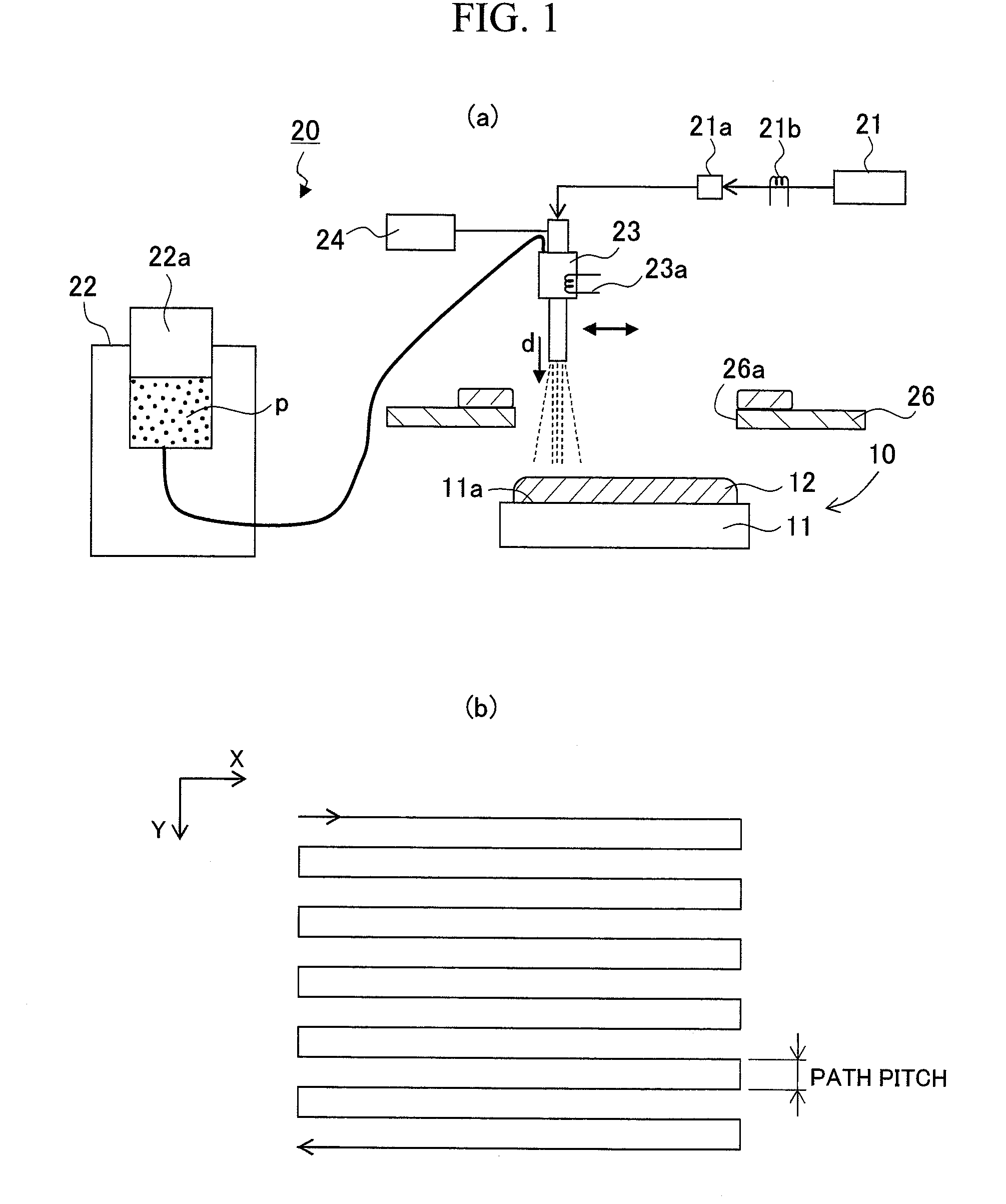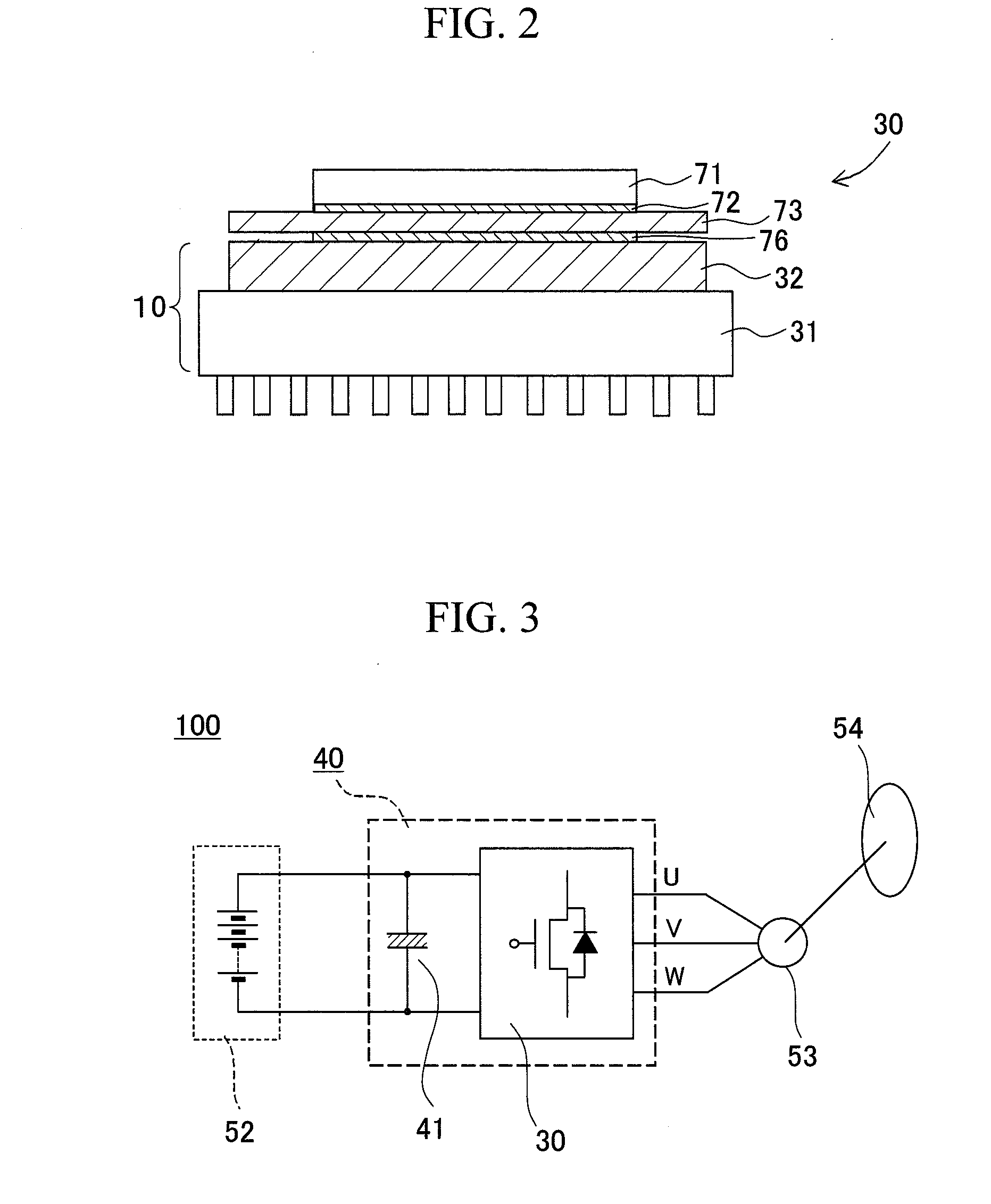Film forming method, thermal conduction member, power module, vehicle inverter, and vehicle
- Summary
- Abstract
- Description
- Claims
- Application Information
AI Technical Summary
Benefits of technology
Problems solved by technology
Method used
Image
Examples
example 1
[0056]A thermal conduction member was produced where a copper film had been formed on a substrate by cold spraying. Specifically, the air (atmospheric air) is compressed such that a density of the copper film was 7.8 kg / m3 (holes: 12% by volume), and a metal powder made of copper, which was in a solid-phase state, was sprayed to the surface of a heat sink member (substrate) made of an aluminum alloy of 30×20 mm in size and 5 mm in thickness (HS standard: A6063S-T1), along with the compressed air (compressed gas), so that a film was formed using the copper powder, and a thermal conduction member was produced.
[0057]A more detailed description is given below: a nozzle for spraying was arranged in a position 30 mm from the top of the heat sink member where surface processing had been performed by shot-blasting, through a masking plate having an opening for masking of 30×20 mm in size. Next, as shown in a table of FIG. 4, a copper powder for film formation was granulated from a water-ato...
examples 2 to 5
[0058]In the same manner as in Example 1, a film of the copper powder was formed on the surface of the substrate. A different point from Example 1 is a powder used at the time of film formation. Specifically, as shown in FIG. 4, in Example 2, a powder was used having been granulated from a gas-atomized powder, milled by a nitrogen gas, made of copper and having a grain size of 3 μm, so as to have an average grain size of 18 μm and an apparent density of 1.88 g / cm3 as a copper powder for film formation. In Examples 3 and 4, powders were used having been sequentially granulated from an electrolytic powder, made of copper and having a grain size of 4.8 μm, so as to have average grain sizes of 22 μm and 21 μm and dummy densities of 1.64 g / cm3 and 1.5 g / cm3, as copper powders for film formation. Further, in Example 5, a dendritic powder having an average grain size of 19.3 μm and an apparent density of 1.64 g / cm3, shown in FIG. 5(a) was used as an electrolytic powder. The adhesion effici...
example 6
[0066]A thermal conduction member was produced in the same manner as in Example 1. A different point from Example 1 is that a film was formed on a temperature condition of the copper powder, immediately before collided with the substrate, of not lower than 50° C., shown in FIG. 8. A thermal conductivity of the film was then measured in the same manner as in Example 1. Results of the measurement are shown in FIG. 8.
PUM
| Property | Measurement | Unit |
|---|---|---|
| Temperature | aaaaa | aaaaa |
| Length | aaaaa | aaaaa |
| Percent by mass | aaaaa | aaaaa |
Abstract
Description
Claims
Application Information
 Login to View More
Login to View More - R&D
- Intellectual Property
- Life Sciences
- Materials
- Tech Scout
- Unparalleled Data Quality
- Higher Quality Content
- 60% Fewer Hallucinations
Browse by: Latest US Patents, China's latest patents, Technical Efficacy Thesaurus, Application Domain, Technology Topic, Popular Technical Reports.
© 2025 PatSnap. All rights reserved.Legal|Privacy policy|Modern Slavery Act Transparency Statement|Sitemap|About US| Contact US: help@patsnap.com



